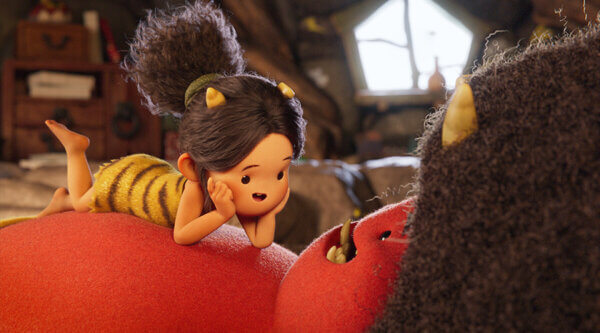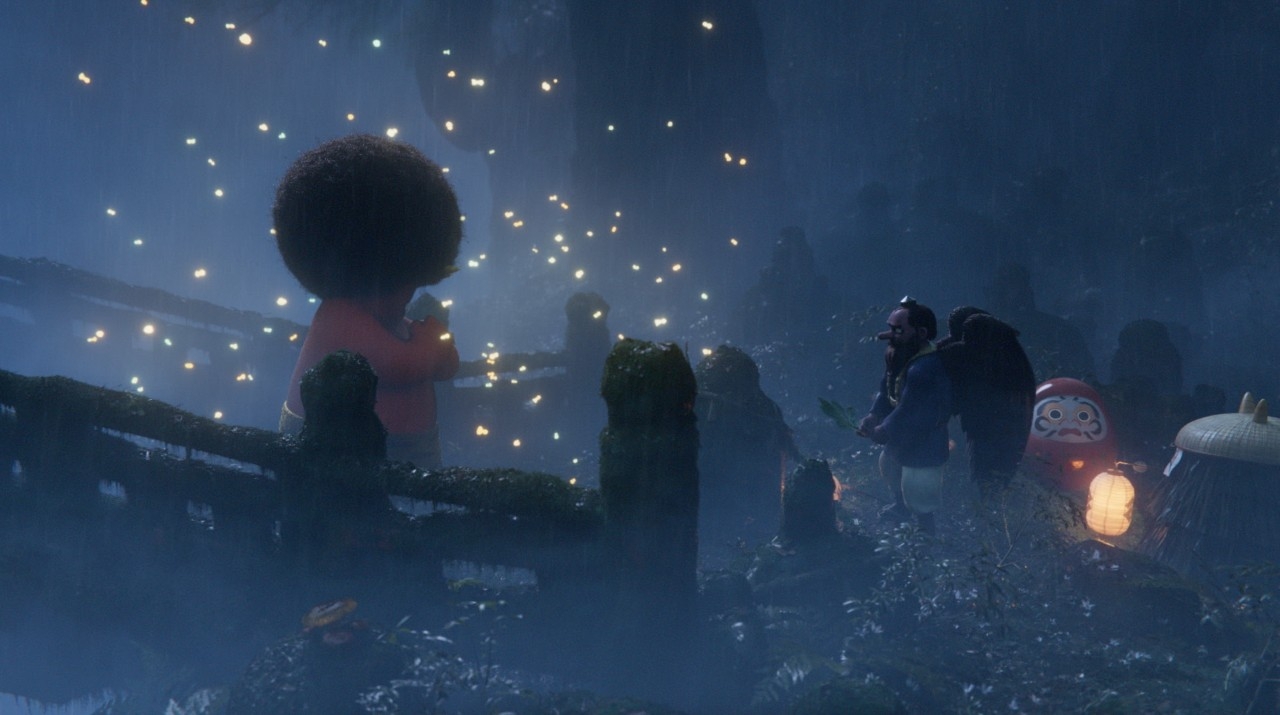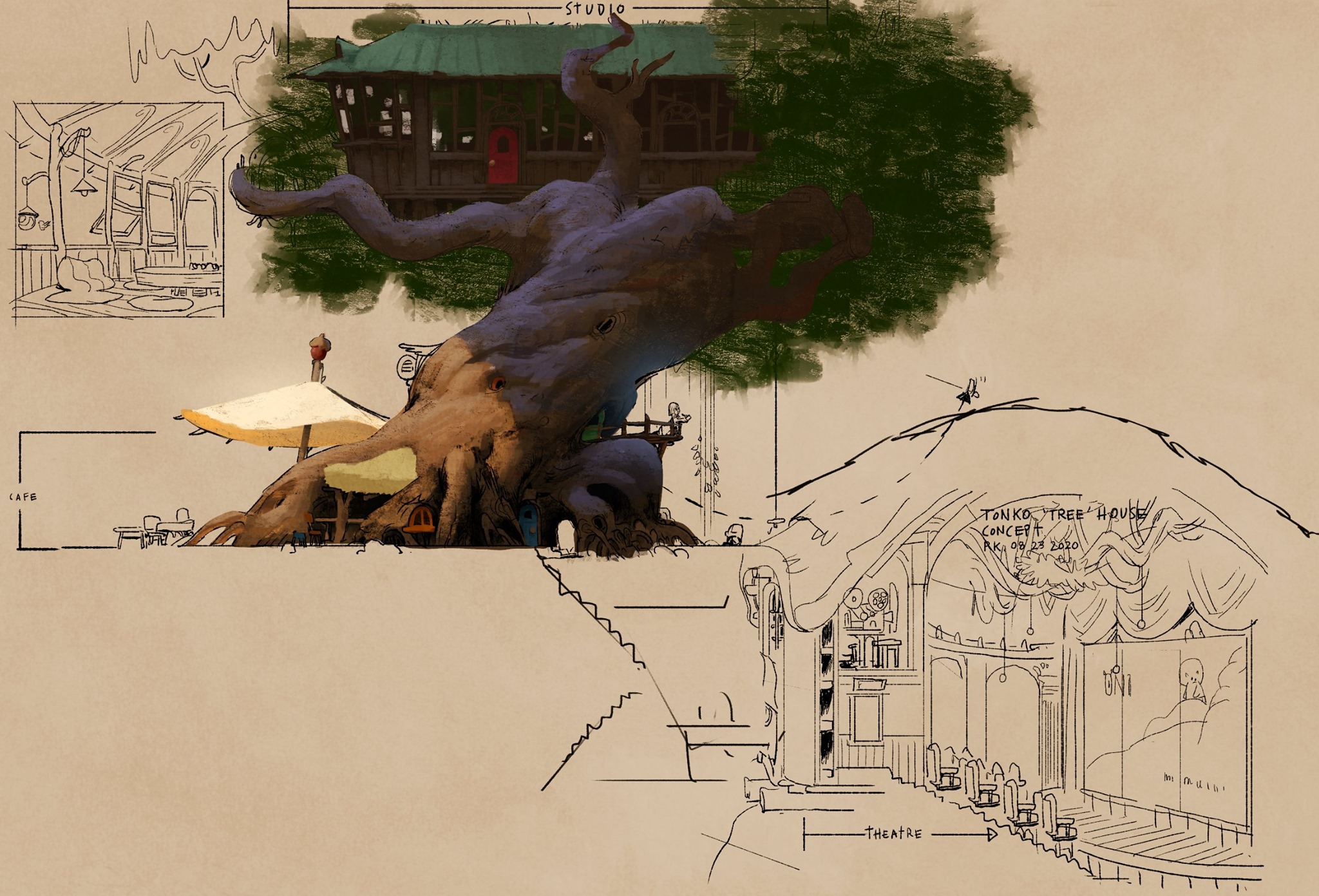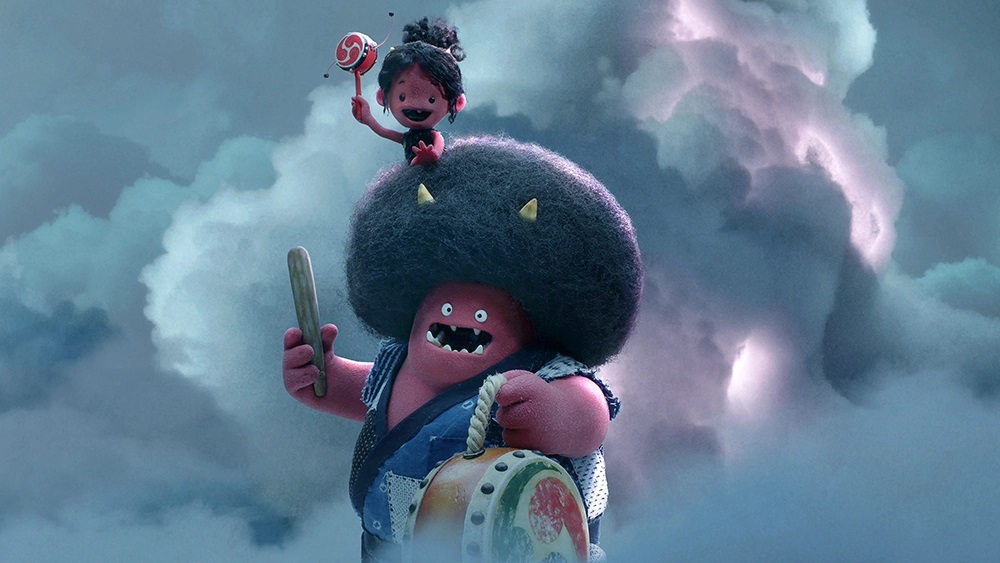
|
Getting your Trinity Audio player ready...
|
ONI: Thunder God’s Tale is a four-part series produced by Netflix and Tonko House. It was released on 21 October 2022 on Netflix, and I have been lucky enough to be a part of its production as an Assistant Technical Director (ATD) at Megalis VFX, Tokyo.
Jump ahead to
ONI
ONI is the story of an epic adventure circling around the lives of Onari and her dad Naridon.
It is based on Japanese folklore; the characters are based on yōkai (supernatural creatures) and Japanese traditions including Tengu, Kappa and Daruma dolls.
Onari embarks on a journey of finding her own powers and discovering more about herself and her family. There are many themes within ONI; not only self-development but also the relationship between a father and daughter.
Robert Kondo, the production designer for this project, said: “Finding my personal connection to ONI wasn’t hard. The aspect of the story about a father and daughter was very relatable for me.
View this post on Instagram
“My own expression of insecurities and the best parts of being a father to my daughter found their way into my drawings I created for the show.”
He writes fondly about pillow fights with his daughter and the struggles of trying to braid her hair, which are all reminiscent of the playful relationship between Onari and Naridon.
Another significant theme is the ignorance and fear that people can exhibit regarding things or people that they do not understand, and the other side of this: not feeling understood.
This is a theme that I would say I resonate most with. I feel that this applies to my own experience of not feeling either British enough or Japanese enough, as well as my interest in a career within the creative industry, which was not something that was really encouraged at my school.
Bringing a world to life
The production also highlights the beauty and value of nature. The set design for the ancient forest is full of life; layers of growth cover the ground, and dappled sunlight streams in through the trees creating a visually rich, cinematic atmosphere.
Tonko House provided the preproduction work including the story, character designs, environment designs and colour scripts.
Then a group of animation companies including Anima, Marza Animation Planet, Roast n’ Post and Megalis VFX transformed these designs into the 3D world.
Frequent communication was required between Tonko House and the 3D artists to ensure that the 3D artefacts captured and honoured the original concept art.
Working on ONI
My role as an ATD involved various tasks to help the workflow run smoothly.
Some of these tasks included checking and fixing any obvious errors in specific shots before the artists worked on them, creating lighting for a shot using an in-house lighting template, animating beads of sweat onto characters, rendering and various other tasks.
The role of an ATD is often quite general and allows you to try working within different areas of the animation pipeline to gain a better understanding of the pipeline as a whole.
It is a great way to be able to be involved in different roles within a project if you are undecided about what you want to specialise in.
As you develop the knowledge of how to fix technical issues and what is needed for each artist, you are able to help achieve a smoother workflow as well as increasing cost and time-efficiency.
An ambitious animation
To date, this is the most ambitious animation project that either Tonko House or Megalis VFX have undertaken since they were founded, and many challenges arose during its production.
ONI was originally going to be a stop-motion animation production created by Dwarf studios with Computer Graphics (CG) elements provided by Megalis VFX; they even created a pilot episode using a hybrid of stop-motion and CG animation.
However, at some point they decided to switch to using only CG, perhaps due to the large amount of special effects work required, as well as the strict time schedule and budget.

Building a tangible world
When ONI was in its stop-motion phase, one aspect that was important to the director was to portray tangibility.
In an interview he stated: “One thing that I fell in love with when we were making in the stop-motion medium was the feeling that you can create the magic of animation with objects that are tactile.
“Something that you can feel that is real, not just visually real but it’s almost like it feels real, like you can touch it, you can really feel that it’s there.”
The stop-motion characters were made from felt, and Tsutsumi wanted to maintain this organic, natural, and tactile feeling within a CG world, which proved to be a challenge.
One way in which the artists achieved this was through ‘groom’; making realistic hair and peach fuzz for the characters to simulate the feel of felt and real materials. Furthermore, the project is animated on twos (12 frames per second) and there is no motion blur, imitating the movement of stop-motion.
The artists took inspiration from their trip to Yakushima Island, Japan; one of the oldest forests in the world.
They wanted to recreate the densely populated moss, trees and foliage.
This was another challenge, but they managed to achieve it despite their relatively minimal resources.

Multippl in ONI: meet Calvin
Without giving away the story, I would like to focus on one of the secondary characters, Calvin.
He is a 10-year-old boy who moved from the US to Japan 6 months prior.
He is enthusiastic, optimistic and kind-hearted, and he has a fascination with yōkai from Japanese folklore.
Being half Black-American and half Japanese, he struggles to fit in and constantly feels like an outsider in Japan.
I can definitely empathise with Calvin.
Although I grew up in multicultural London, I also experienced living in Japan at a young age and attending a local Japanese primary school for a few months.
I was one of only a few non-Japanese pupils at that school, and living within such a homogenous environment was not something I had experienced before.
I remember not being able to communicate well enough in Japanese to make any real friends there.
Calvin seems to have a similar school experience, despite being able to communicate well with his peers and possessing an outgoing personality.
I have also heard of similar experiences from friends and through various documentaries and interviews.
Of course, this may not be the experience of every child with a different ethnic background living in Japan, and as cultural diversity within Japan increases over time, hopefully this will become less of an issue.
Eyeing up the details
The character designs of ONI are simple and effective.
In Western animated films, characters with enlarged eyes are very common as emotions are mostly expressed via the eyes.
Larger eyes are also seen as appealing as they are a common characteristic of babies, evoking a sense of innocence and vulnerability.
Tsutsumi had to fight for the character designs put forward by Tonko House: “I promised Netflix, ‘Hey, I understand your concern. I assure you, we can convey emotion.’
“I know they’re worried about how the dot eyes can convey acting and emotions.
“I’m like, ‘I can guarantee you, we can do it, but you have to trust us.’
“He explained that it is important to ‘let the audience fill in the gaps.'”
“You don’t have to make all the characters look the same… It’s very similar to, ‘Hey, Japanese people, your eyes are not the same as Caucasian people’s eyes.’ Animated characters should have a diversity in design.”
The eyes themselves have a couple of variations such as constricted pupils to show surprise, and half-closed eyelids to show dissatisfaction, but many of the emotions are expressed through the eyebrows.
An incredible experience
My own personal experience of working on this project was surreal.
Having just graduated from University I felt out of my depth.
Being allowed to sit in on director meetings with so many established artists was equally daunting and inspiring, but everyone was so welcoming and humble that I soon began to feel more comfortable.
The production of ONI was started four years ago by a group of incredibly talented artists who wanted to tell a meaningful story.
The final Zoom meeting we had with the directors and producers at Tonko House was emotional.
The directors and heads were expressing how rewarding the experience has been, and how grateful they felt to have been able to work on such a beautiful project, and to work with everyone who had been involved in its creation.
It truly was a special moment.
I feel immense gratitude for the whole experience and I hope its viewers in the years to come will enjoy watching it as much as I enjoyed being a part of it.

I feel immense gratitude for the whole experience.
I hope its viewers in the years to come will enjoy watching it as much as I enjoyed being a part of it.

